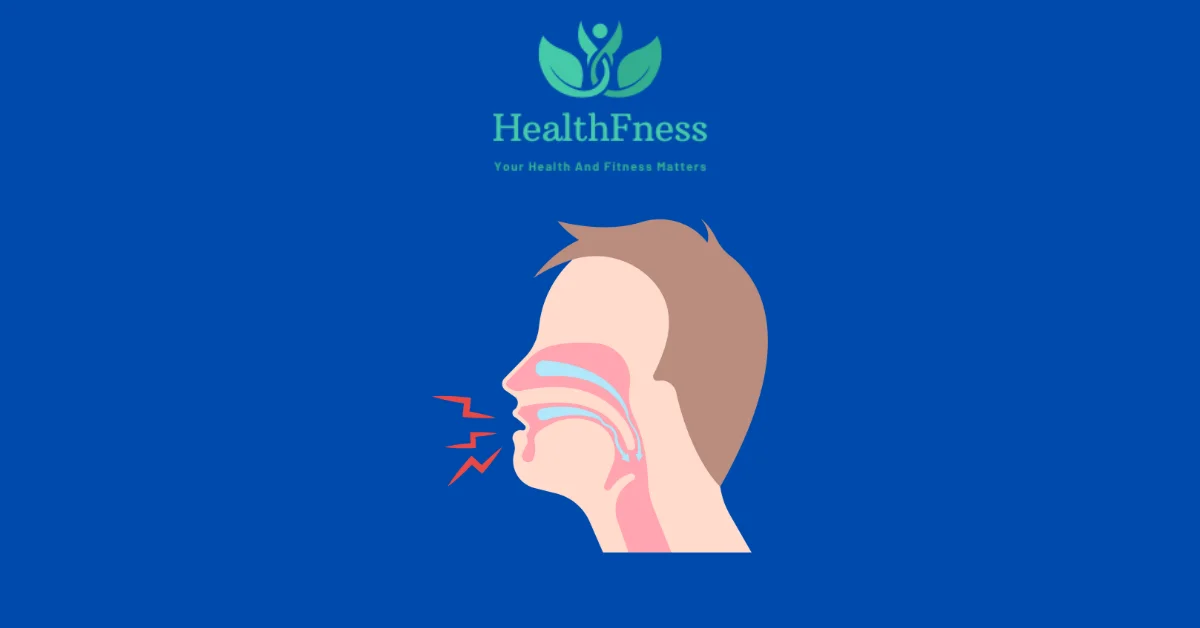Do you snore so loudly that you wake up your partner? Do you wake up gasping for air, with a pounding headache, or feeling just as exhausted as when you went to bed? These aren’t just signs of a bad night’s sleep; they could be red flags for sleep apnea, a serious and surprisingly common sleep disorder. Millions of people live with undiagnosed sleep apnea, unaware that the nightly struggle for breath is silently taking a toll on their heart, brain, and overall health.
This comprehensive guide is designed to shed light on this silent threat. We’ll explore what sleep apnea is, its hidden dangers, the latest breakthroughs in diagnosis and treatment, and the practical steps you can take to reclaim your nights and protect your long-term well-being. If you or a loved one experiences any of the symptoms we discuss, this article will empower you with the knowledge to seek help and start the journey toward healthier, more restorative sleep.
What Is Sleep Apnea? A Deeper Look
At its core, sleep apnea is a sleep disorder characterized by repeated interruptions in breathing during sleep. The word “apnea” literally means “cessation of breath.” These pauses can last from a few seconds to over a minute and can occur hundreds of times throughout the night, often without the person’s awareness. Each pause triggers a survival reflex in the brain, which briefly rouses the person from deep sleep to reopen the airway. This constant cycle of stopping breathing and waking up prevents restorative sleep and starves the body of a consistent oxygen supply.
There are three primary types of sleep apnea, each with a different underlying cause:
- Obstructive Sleep Apnea (OSA): This is by far the most common form, accounting for over 80% of cases. OSA occurs when the muscles in the back of the throat relax too much during sleep, causing the soft tissues (like the tongue and soft palate) to collapse and physically block the upper airway. Despite the brain’s signals to breathe, air cannot get through the obstruction. Think of it like a soft, flexible straw collapsing when you try to drink through it.
- Central Sleep Apnea (CSA): This type is less common and is fundamentally a communication problem. In CSA, the airway is not blocked, but the brain fails to send the proper signals to the muscles that control breathing. The body makes no effort to breathe for brief periods. It often relates to underlying medical conditions affecting the brainstem, such as heart failure, stroke, or the use of certain medications like opioids.
- Complex or Treatment-Emergent Sleep Apnea: This is a combination of both OSA and CSA. A person may initially be diagnosed with OSA, but after starting treatment with a CPAP machine (the standard therapy for OSA), they begin to experience central apneas. The reasons for this are still being studied, but it highlights the complexity of sleep-disordered breathing.
Causes and Risk Factors: Who Is at Risk for Sleep Apnea?
While anyone can develop sleep apnea, certain factors significantly increase your risk. The causes differ between obstructive and central sleep apnea.
Common Risk Factors for Obstructive Sleep Apnea (OSA)
- Excess Weight: Obesity is the single biggest risk factor. Fat deposits around the neck and upper airway can narrow the breathing passage, making it more likely to collapse during sleep.
- Large Neck Circumference: A neck size greater than 17 inches (43 cm) for men and 16 inches (40.5 cm) for women is a strong predictor of OSA, as it indicates more soft tissue that can obstruct the airway.
- Anatomy: Natural structural features can predispose someone to OSA. These include a narrowed airway, large tonsils or adenoids (especially in children), a large tongue (macroglossia), or a jaw that is set back (retrognathia).
- Gender: Men are two to three times more likely to have sleep apnea than pre-menopausal women. However, a woman’s risk increases significantly after menopause, eventually matching that of men.
- Age: The risk for sleep apnea increases as you get older, as muscle tone in the throat naturally decreases.
- Family History: Having family members with sleep apnea increases your own risk, suggesting a genetic component to airway structure and function.
- Alcohol, Sedatives, and Tranquilizers: These substances relax the throat muscles further, which can worsen or even cause airway collapse during sleep.
- Smoking: Smokers are three times more likely to have OSA. Smoking increases inflammation and fluid retention in the upper airway, narrowing the passage.
- Nasal Congestion: Difficulty breathing through your nose, whether from allergies, a deviated septum, or other issues, increases the likelihood of OSA.
Common Risk Factors for Central Sleep Apnea (CSA)
- Congestive Heart Failure: This is a major risk factor for a specific type of CSA called Cheyne-Stokes breathing.
- Stroke or Brain Injury: Damage to the brainstem, which controls breathing, can lead to CSA.
- Age: Individuals over 60 are at higher risk.
- Opioid Use: Pain medications like morphine, oxycodone, and codeine can suppress the brain’s breathing drive.
- High Altitude: The change in oxygen levels at high altitudes can trigger CSA in some individuals.
Why You Can’t Ignore Sleep Apnea Symptoms: The Warning Signs
Recognizing the symptoms of sleep apnea is the first and most critical step toward diagnosis and treatment. Because many of the most dramatic events happen during sleep, it’s often a bed partner who first notices the problem. However, the daytime consequences are powerful clues.
The Most Common Warning Signs of Sleep Apnea
- Loud, Chronic Snoring: While not everyone who snores has sleep apnea, most people with OSA snore loudly and persistently. The snoring is often interrupted by periods of silence, the apneas, followed by loud gasps or choking sounds.
- Witnessed Pauses in Breathing: A bed partner may notice that you stop breathing for periods during sleep. This is the hallmark sign of sleep apnea.
- Excessive Daytime Sleepiness (Hypersomnia): This isn’t just feeling tired; it’s an overwhelming urge to sleep during the day, even at inappropriate times like while driving, working, or talking.
- Waking Up Abruptly with a Sensation of Gasping or Choking: This is the body’s emergency response to a lack of oxygen.
- Morning Headaches: Frequent headaches upon waking are often caused by low oxygen levels and high carbon dioxide levels in the blood overnight.
- Waking with a Dry Mouth or Sore Throat: This is a result of breathing through your mouth all night to try and get more air.
- Difficulty Concentrating and Memory Problems: The lack of restorative sleep and oxygen severely impacts cognitive functions, often described as “brain fog.”
- Mood Changes: Irritability, anxiety, and depression are common in people with untreated sleep apnea.
- Frequent Nighttime Urination (Nocturia): Changes in pressure within the chest during apnea events can affect hormone levels that control urine production, leading to multiple trips to the bathroom at night.
Sleep Apnea Symptoms in Women: A Different Picture
It’s crucial to note that women may present with different, often more subtle, symptoms than men. As a result, their condition is frequently overlooked or misdiagnosed as insomnia, depression, or chronic fatigue syndrome. Women are more likely to report:
- Fatigue rather than overt sleepiness
- Insomnia (difficulty falling or staying asleep)
- Restless legs syndrome
- Anxiety and depression
- Morning headaches
Because these symptoms are less “classic,” healthcare providers and patients alike need to maintain a high index of suspicion for sleep apnea in women experiencing persistent fatigue and sleep disturbances.
Risks and Side Effects: The Dangers of Untreated Sleep Apnea
Untreated sleep apnea is not just a nuisance; it’s a serious medical condition with life-threatening consequences. The repeated drops in blood oxygen levels (hypoxemia) and the stress of frequent awakenings place immense strain on virtually every system in the body.
So, can sleep apnea kill you? Directly, it’s very rare for a person to die in their sleep from an apnea event. Indirectly, however, the long-term cumulative damage dramatically increases the risk of premature death from related health complications.
Major Health Complications of Sleep Apnea:
- Cardiovascular Disease: This is the most significant risk. Untreated sleep apnea is strongly linked to:
- High Blood Pressure (Hypertension): The sudden drops in oxygen during apneas strain the cardiovascular system, leading to elevated blood pressure that persists even during the day.
– Heart Attack: OSA increases the risk of heart attack and abnormal heart rhythms (arrhythmias), such as atrial fibrillation.
- Stroke: The risk of stroke is significantly higher in individuals with moderate to severe sleep apnea.
- Heart Failure: The constant strain on the heart can weaken the heart muscle over time.
- Type 2 Diabetes: Sleep apnea is linked to insulin resistance, a condition where the body’s cells don’t use insulin effectively. A 2009 study in the American Journal of Medicine found that OSA is an independent risk factor for developing type 2 diabetes.
- Metabolic Syndrome: This is a cluster of conditions, high blood pressure, high blood sugar, excess body fat around the waist, and abnormal cholesterol levels, that occur together, increasing your risk of heart disease, stroke, and diabetes. Sleep apnea is a key component of this syndrome.
- Nonalcoholic Fatty Liver Disease (NAFLD): Research has shown a strong association between OSA and liver problems, including scarring and abnormal liver function tests, even independent of obesity. A 2013 meta-analysis in Obesity Reviews confirmed this link.
- Daytime Accidents: Excessive daytime sleepiness makes you two to three times more likely to be involved in a motor vehicle accident, according to a 2007 review in the American Journal of Respiratory and Critical Care Medicine. The risk for workplace accidents is also significantly elevated.
- Complications with Surgery and Medications: People with sleep apnea are at higher risk for complications after major surgery because anesthesia can further relax the airway. They are also more sensitive to sedating medications.
Latest Studies and Findings (2022-2024)
The field of sleep medicine is constantly evolving. Recent research has moved beyond simply counting apnea events (the AHI) to understanding the specific physiological impacts that drive disease.
- Beyond AHI – The Importance of Hypoxic Burden: A landmark 2019 study in the European Heart Journal introduced the concept of “hypoxic burden.” It found that the total amount of time spent with low oxygen and the severity of the oxygen drops were much better predictors of cardiovascular death than the traditional Apnea-Hypopnea Index (AHI). This is shifting how doctors assess the severity of OSA.
- Heart Rate Changes as a Predictor: A 2022 study published in the American Journal of Respiratory and Critical Care Medicine by Azarbarzin et al. found that patients whose heart rates fluctuated more wildly during sleep events gained the most cardiovascular benefit from CPAP therapy. This could help doctors identify which patients are at the highest risk and need treatment most urgently.
– Long-Term Efficacy of Oral Appliances: While CPAP is the gold standard, many patients struggle with adherence. A 10-year follow-up study by Uniken Venema et al. (2020) in the Journal of Clinical Sleep Medicine demonstrated that for many patients, mandibular advancement devices (oral appliances) provided similar long-term improvements in neurobehavioral outcomes (like sleepiness and quality of life) as CPAP, highlighting their viability as a long-term alternative.
- The Gut-Brain-Lung Axis: Emerging research is exploring the link between sleep apnea, the gut microbiome, and systemic inflammation. A 2023 study in Sleep suggested that the intermittent hypoxia from OSA can alter gut bacteria, potentially contributing to the inflammation that drives cardiovascular and metabolic disease.
Comparison of Sleep Apnea Types
Understanding the key differences between the types of sleep apnea can help clarify diagnosis and treatment approaches. Here is a simple comparison table:
| Feature | Obstructive Sleep Apnea (OSA) | Central Sleep Apnea (CSA) | Complex/Treatment-Emergent Sleep Apnea |
|---|---|---|---|
| Primary Cause | Physical blockage of the upper airway by soft tissues. | Brain fails to send signals to breathing muscles. | A mix of OSA and CSA, often appearing after OSA treatment begins. |
| Breathing Effort | Effort to breathe continues, but air cannot pass the obstruction. Often seen as chest/abdominal movement. | No effort to breathe is made. Chest and abdomen are still. | Variable; may show periods of effort (OSA) and periods of no effort (CSA). |
| Common Symptoms | Loud snoring, gasping, excessive daytime sleepiness. | May have less prominent snoring. Shortness of breath, insomnia, and daytime sleepiness are common. | Symptoms of OSA that persist or change despite PAP therapy. |
| Key Risk Factors | Obesity, large neck, anatomy, male gender, alcohol use. | Heart failure, stroke, opioid use, high altitude. | Pre-existing OSA, use of PAP therapy, underlying heart conditions. |
| Primary Treatment | Positive Airway Pressure (CPAP), oral appliances, lifestyle changes, surgery. | Treating the underlying condition, adaptive servo-ventilation (ASV), oxygen. | Advanced PAP therapy (ASV, BiPAP), managing underlying conditions. |
Getting Diagnosed and Finding the Right Treatment
If you suspect you have sleep apnea, the path to feeling better involves a clear diagnostic process followed by a personalized treatment plan.
Step 1: The Diagnosis Process
Your journey begins with a visit to your primary care physician or a sleep specialist. They will likely:
- Discuss Your Symptoms and Medical History: Be prepared to talk about your sleep habits, daytime sleepiness, and any symptoms your bed partner has noticed.
– Use Screening Questionnaires: Tools like the STOP-BANG questionnaire (Snoring, Tired, Observed apnea, blood Pressure, BMI, Age, Neck size, Gender) help assess your risk.
- Perform a Physical Exam: The doctor will examine your mouth, throat, and neck to look for physical risk factors like a large tongue, big tonsils, or a narrow airway.
If sleep apnea is suspected, a sleep study will be ordered. There are two main types:
- In-Laboratory Polysomnography (PSG): This is the “gold standard” for diagnosis. You spend the night at a sleep center hooked up to sensors that monitor brain waves (EEG), eye movements, muscle activity, heart rate (ECG), breathing effort, airflow, and blood oxygen levels. It provides a complete picture of your sleep architecture and can diagnose all types of sleep disorders.
- Home Sleep Apnea Test (HSAT): For many people with a high probability of moderate to severe OSA and no other complex medical issues, a home test is a convenient alternative. You use a portable device that measures breathing, oxygen levels, and heart rate. While it cannot diagnose central sleep apnea or other sleep disorders, it is very effective for diagnosing OSA.
The results of your sleep study will determine your Apnea-Hypopnea Index (AHI), which is the average number of apnea and hypopnea (shallow breathing) events you have per hour of sleep. This number defines the severity of your condition:
- Normal: Fewer than 5 events per hour
- Mild OSA: 5 to 14 events per hour
- Moderate OSA: 15 to 30 events per hour
- Severe OSA: More than 30 events per hour
Step 2: Exploring Treatment Options
Treatment is not one-size-fits-all. The best approach depends on the severity of your apnea, your physical health, and your personal preferences. The goal is to keep your airway open so you can breathe continuously and sleep soundly.
Lifestyle Modifications
For mild sleep apnea, lifestyle changes may be enough. For moderate to severe cases, they are a crucial supplement to other therapies.
- Weight Loss: Even a 10% reduction in body weight can significantly reduce the AHI and may even cure mild OSA.
- Positional Therapy: Some people have apnea primarily when sleeping on their back. Devices that encourage side-sleeping (special pillows, wearable alarms) can be very effective.
– Avoid Alcohol and Sedatives: Especially in the hours before bed, as they relax the throat muscles.
- Quit Smoking: This reduces airway inflammation.
- Treat Nasal Allergies/Congestion: Using nasal sprays or decongestants can improve airflow.
Positive Airway Pressure (PAP) Therapy
This is the most common and effective treatment for moderate to severe sleep apnea. A PAP machine delivers a gentle stream of pressurized air through a mask you wear over your nose, mouth, or both. This air acts as a “pneumatic splint” to keep your airway from collapsing.
- CPAP (Continuous Positive Airway Pressure): Delivers one constant pressure all night.
– APAP (Auto-titrating Positive Airway Pressure): Automatically adjusts the pressure based on your breathing needs throughout the night.
– BiPAP (Bilevel Positive Airway Pressure): Delivers a higher pressure when you inhale and a lower pressure when you exhale, which some people find more comfortable.
Oral Appliance Therapy
For patients with mild to moderate OSA, or those who cannot tolerate CPAP, a custom-fitted oral appliance is an excellent alternative. Worn like a mouthguard, a Mandibular Advancement Device (MAD) gently pushes the lower jaw and tongue forward, which helps to keep the airway open. These must be fitted by a dentist with expertise in dental sleep medicine.
Surgical Options
Surgery is typically considered a last resort when other treatments have failed. Procedures aim to remove or reposition tissue to widen the airway.
- Uvulopalatopharyngoplasty (UPPP): Removes tissue from the soft palate and uvula.
- Maxillomandibular Advancement (MMA): A more complex surgery that moves the upper and lower jaws forward. It is highly effective but has a longer recovery time.
The Newest Treatment for Sleep Apnea: Hypoglossal Nerve Stimulation (HNS)
One of the most exciting advancements in recent years is Hypoglossal Nerve Stimulation (brand name Inspire). This is an implantable device, similar to a pacemaker, that works from inside the body.
A sensor in the chest detects your breathing pattern. During an apnea, it sends a mild electrical pulse to the hypoglossal nerve, which controls the tongue. This stimulation causes the tongue to move forward, opening the airway. The STAR Trial, published in 2014 in the New England Journal of Medicine, showed HNS significantly reduced apnea events and improved quality of life. It is an FDA-approved option for people with moderate to severe OSA who cannot use or get benefit from CPAP and meet certain criteria (e.g., BMI below a certain threshold).
FAQs: Your Sleep Apnea Questions Answered
- 1. Can sleep apnea be cured?
- For some people, yes. If sleep apnea is caused by excess weight, significant weight loss can sometimes cure the condition, especially in mild cases. Surgical correction of an anatomical issue (like large tonsils in a child) can also be curative. For most adults, however, sleep apnea is a chronic condition that is managed with lifelong treatment, like CPAP or an oral appliance, rather than cured.
- 2. Can sleep apnea kill you?
- While it’s extremely rare to die directly from an apnea event, untreated sleep apnea dramatically increases your risk of dying prematurely from its long-term complications, such as heart attack, stroke, and heart failure. So, indirectly, yes, it is a life-threatening condition.
- 3. What is the best treatment for sleep apnea?
- The “best” treatment is the one that is effective and that you will use consistently. For moderate to severe OSA, CPAP therapy is considered the gold standard because it is highly effective. However, if a patient cannot tolerate CPAP, an oral appliance or hypoglossal nerve stimulation may be the best option for them. The decision should be made in consultation with a sleep specialist.
- 4. How do I know if I have sleep apnea without a test?
- You can’t be certain without a medical diagnosis from a sleep study. However, you can have a very high suspicion based on symptoms. If you have multiple key signs, such as loud snoring, witnessed breathing pauses, and significant daytime sleepiness, there is a very high probability you have sleep apnea, and you should see a doctor immediately for testing.
- 5. Does losing weight cure sleep apnea?
- It can. For overweight or obese individuals, weight loss is the most effective lifestyle intervention. A modest weight loss of 10-15% can cut the severity of sleep apnea by 50% in many patients. In some cases of mild OSA, reaching a healthy weight can resolve it completely. For more severe cases, weight loss can make other treatments, like CPAP, more effective and may allow for lower pressure settings.
- 6. Is central sleep apnea more serious than obstructive sleep apnea?
- Neither is “more serious” in a general sense, both are dangerous if left untreated. The seriousness often depends on the underlying cause. CSA is frequently a symptom of another serious condition, like advanced heart failure or a neurological disorder. Therefore, the presence of CSA can be a marker of a more complex and severe underlying health problem that needs to be addressed.
Conclusion: Take the First Step Toward Better Sleep and Health
Sleep apnea is far more than just snoring. It is a serious medical condition that systematically undermines your health, robbing you of restorative sleep and putting you at risk for devastating long-term diseases. The good news is that it is highly treatable. From lifestyle changes and effective PAP therapy to innovative oral appliances and nerve stimulation, there are more options than ever to help you breathe easily and sleep soundly.
Ignoring the warning signs is a gamble with your health that you cannot afford to take. If you or someone you love is experiencing the symptoms described in this guide, don’t wait. Talk to your doctor. A diagnosis is the first step toward reclaiming your energy, sharpening your mind, protecting your heart, and dramatically improving your quality of life.
References
- Gottlieb, D. J., & Punjabi, N. M. (2020). Diagnosis and Management of Obstructive Sleep Apnea: A Review. JAMA, 323(14), 1389–1400. https://jamanetwork.com/journals/jama/article-abstract/32286648
- Young, T., Palta, M., Dempsey, J., Skatrud, J., Weber, S., & Badr, S. (1993). The occurrence of sleep-disordered breathing among middle-aged adults. New England Journal of Medicine, 328(17), 1230-1235.
- Yeghiazarians, Y., et al. (2021). Obstructive Sleep Apnea and Cardiovascular Disease: A Scientific Statement From the American Heart Association. Circulation, 144(3), e56-e67.
- Azarbarzin, A., et al. (2022). Cardiovascular Benefit of Continuous Positive Airway Pressure in Adults with Coronary Artery Disease and Obstructive Sleep Apnea without Excessive Sleepiness. American Journal of Respiratory and Critical Care Medicine, 206(6), 767-774.
- Uniken Venema, J. A. M., et al. (2020). Long-term obstructive sleep apnea therapy: a 10-year follow-up of mandibular advancement device and continuous positive airway pressure. Journal of Clinical Sleep Medicine, 16(3), 353–359.
- Strollo, P. J., et al. (STAR Trial Group). (2014). Upper-airway stimulation for obstructive sleep apnea. New England Journal of Medicine, 370(2), 139-149.
- Woodson, B. T., et al. (2018). Upper Airway Stimulation for Obstructive Sleep Apnea: 5-Year Outcomes. Otolaryngology–Head and Neck Surgery, 159(1), 194-202.
- Mayo Clinic. (n.d.). Sleep apnea. Retrieved from https://www.mayoclinic.org/diseases-conditions/sleep-apnea/symptoms-causes/syc-20377631
- Slowik, J. M., Sankari, A., & Collen, J. F. (2023). Obstructive Sleep Apnea. In StatPearls. StatPearls Publishing.

Dr. Mark Jenkins, MD - General Physician (California, USA)
Dr. Mark Jenkins is a board-certified general physician based in the United States, specializing in preventive medicine, nutrition, and lifestyle health. With years of clinical experience in primary care, he is dedicated to helping patients and readers alike make informed, science-based decisions about their well-being.
As a trusted medical reviewer and contributor to Healthfness.com, Dr. Jenkins ensures that all health content meets the highest standards of accuracy, safety, and evidence-based medicine. His expertise bridges modern medical science with practical, everyday wellness strategies, making complex topics approachable for all audiences.
Outside the clinic, Dr. Jenkins is passionate about living the healthy lifestyle he teaches. He enjoys hiking with his dog, experimenting with vegetarian cooking, and exploring the latest health research. He believes that small, consistent lifestyle changes lead to lasting health improvements, and he aims to inspire readers to take proactive steps toward a healthier, happier life.
Explore more of Dr. Jenkins’ evidence-based insights at Healthfness.com



